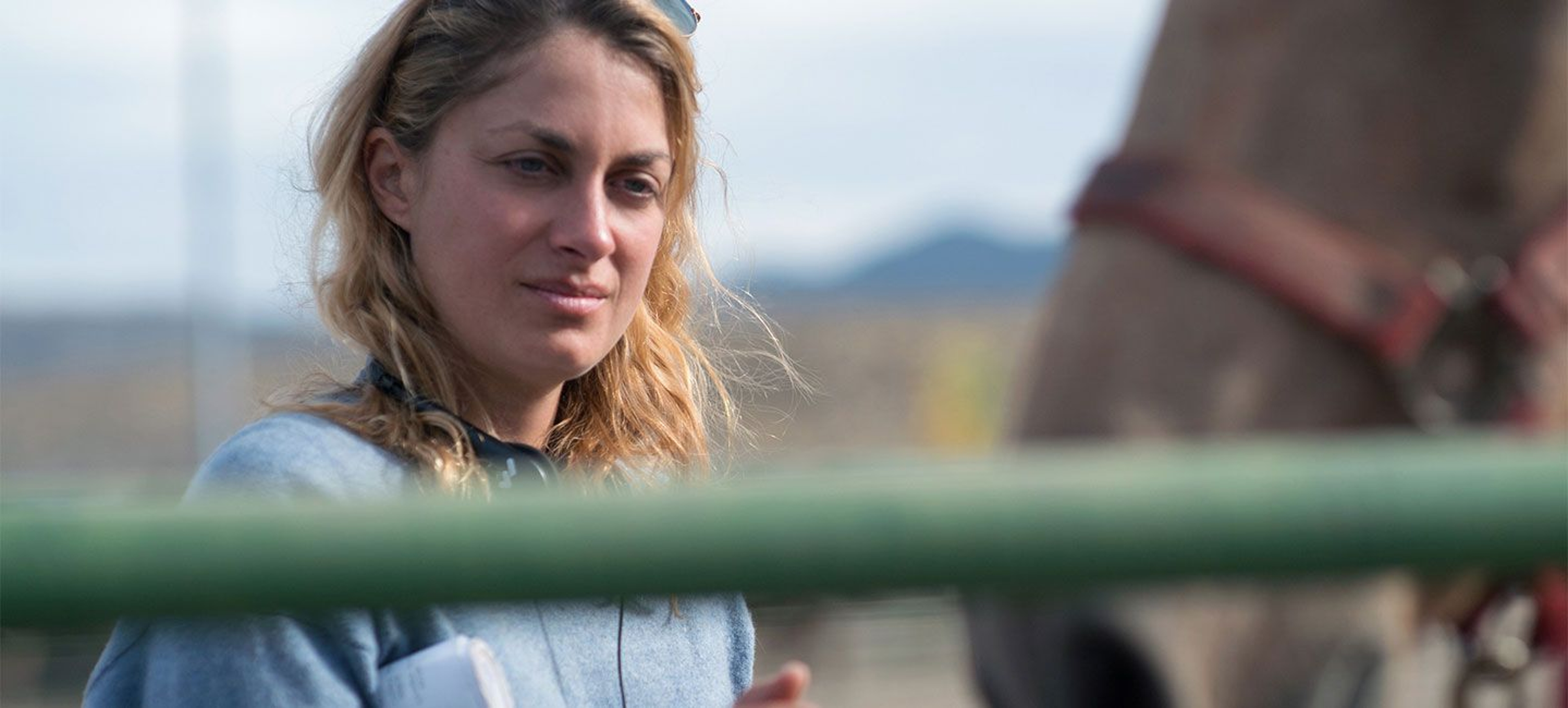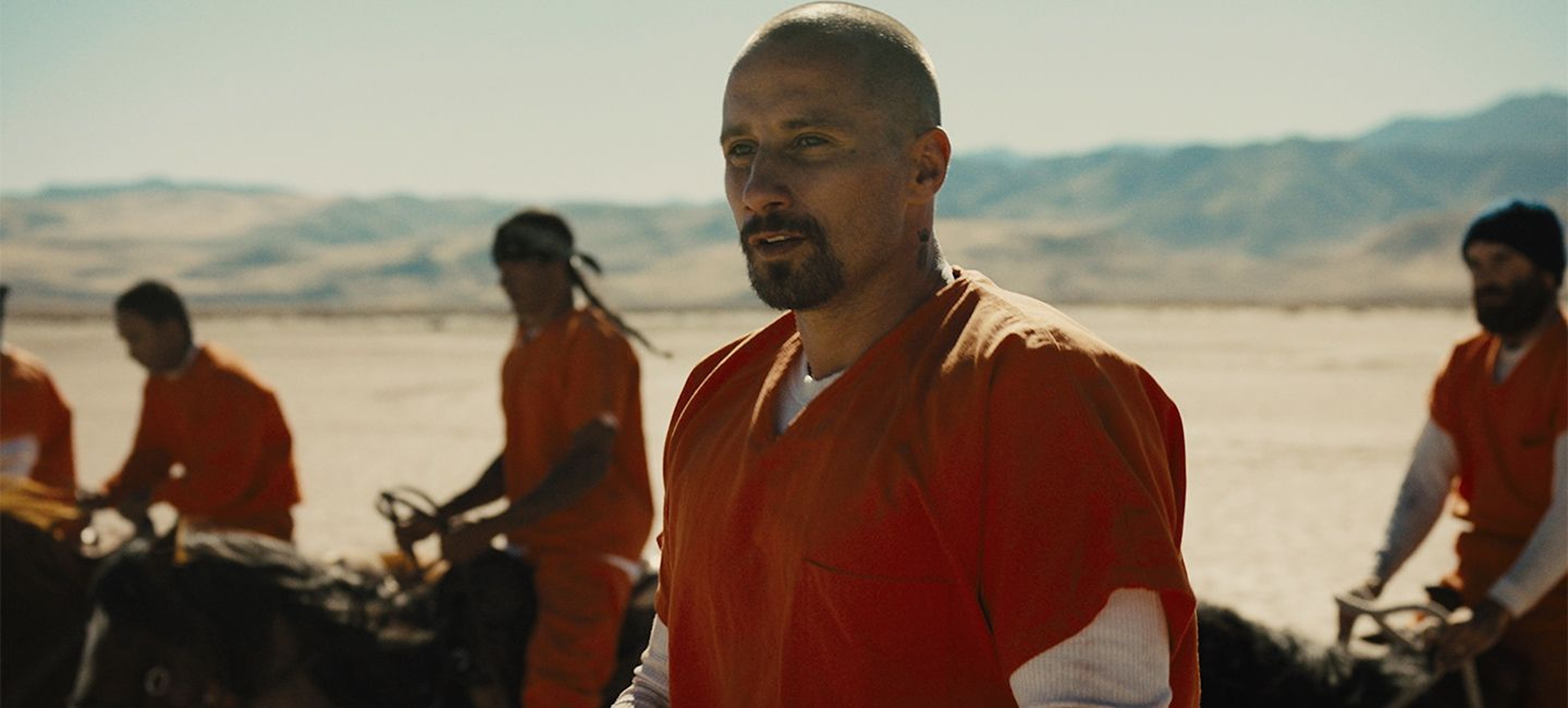In Laure de Clermont-Tonnerre’s debut feature The Mustang—in select theaters March 15—Roman Coleman (Matthias Schoenaerts), an inmate at the Northern Nevada Correctional Center, is given a second chance at life after being selected into the Wild Horse Inmate Program. Tasked with calming an uncontrollable creature, Coleman finds he must first tame his own raging nature. Premiering at the 2018 Sundance Film Festival, The Mustang touched the hearts of critics and audiences who got a chance to see it. ”Clermont-Tonnerre’s spirited debut reverberates with the feeling that even unforgivable men can be fixed,” wrote Indiewire. In 2015, the French filmmaker’s short film Rabbit, a powerful look at how female inmates were dramatically transformed by taking care of small animals, screened to acclaim at the Sundance Film Festival. That same year, Laure de Clermont-Tonnerre won the Sundance Institute/NHK Award, a prestigious honor that “recognizes and supports a visionary filmmaker on his or her next film,” which in this case was The Mustang.
We spoke with de Clermont-Tonnerre about her journey to make The Mustang, what she learned from actual prisoners, and how she hopes this film can change lives.
The official trailer for The Mustang
How did you first come up with an idea of making a feature film about prisoners working with wild horses?
About five years ago I read an article about animal therapy in a French newspaper. I got very intrigued by the potential of pairing prisoners and small animals. Originally I thought it was going to be a comedy. I called a therapist doing this work in France with rabbits, chinchillas, mice, and even birds. I witnessed how impactful these animals were and found the stories of them with prisoners heartbreaking. From that, I decided to write Rabbit, my short film that premiered at Sundance four years ago. Digging into the subject even deeper, I found out about this program in Nevada that used wild horses. “That should be a feature film,” I thought. So from Paris to Nevada, from the rabbit to the horse, I ended up doing The Mustang.
Had you much experience with horses?
Yes, I grew up riding. My sister rode, and since I wanted to be just like my sister. I rode horses, too. I've always had a real connection with animals. But I was also fascinated with punishment. What was life in prison like? Was it education or incarceration? I talked to a lot of people—from prisoners to people running the animal programs—to deepen my understanding of these animal programs. There are people from the program like Thomas Smittle [who plays Tom] in the film. He was in prison for 15 years and told me his life was saved by a horse.
How did you cast Matthias to play Roman Coleman?
I met Matthias several years ago. We had the same agent in France. I knew his work and always found it extremely powerful and emotional. Originally I was looking for an American, but when I realized he has absolutely no accent, I felt I'd finally found Roman. Matthias was touched by the story in a very deep, personal way, which was such a gift because he was involved from the very beginning. We went to prisons together. He wanted to hear and absorb all the stories about how those men found redemption. I think that doing all that research together helped me find the elements that make his character work. When you write a character for years, it is sort of like a ghost looking for a body and a face. When I saw Matthias, I realized this was the one I was looking for.

Writer/Director Laure de Clermont-Tonnerre on the set of The Mustang
Can you talk about you prepared for the film?
I went to Nevada—which started the wild horse program—six or seven times before we made the film in order to watch them training and to gather a lot of information about the men's lives and how they build trust and respect with the animals. Matthias came at the end of one week to observe the program in the prison. We also went to San Quentin to meet inmates with deep anger and violence issues. It was important to understand violence and anger on that level. During the process, I worked with this amazing prison therapist Kathleen O’Meara, who helped me meet a lot of men with domestic violence issues to learn what triggers their anger and physical violence. I need to immerse myself in this world to understand specifically and carefully the steps from beginning to end in the program.
The contrast between the prison cells and the wide-open Western landscape is breathtaking. Can you talk about the film’s look?
There is a really big difference between the inside and the outside of the prison in the film. I wanted people to feel the inside as a claustrophobic, rigid square. Outside, you have these spectacular mountains surrounding the prison. In the training area, you have these geometric fences with wild animals making unpredictable movements inside them. The design was very geometric: the circular movement of the horses running inside the fences created a round shape inside a square. In shooting the training, we used a handheld camera to give a visceral and immersive sensation. Since you cannot predict horses' movements, we used lightweight equipment to capture the action as close as possible. Inside the prison, everything is very rigid, static, and square. We shot the film in a 1.66:1 format because I thought that would capture the claustrophobia in the prison. It creates a frame for the men on horses that is limited.
This is a very emotional film. What would you like audiences to take away?
First off, I want people to know about this program. I was amazed how unknown those programs are. It’s important to understand that this program helps a lot of men. It really gives a second chance to men who need a second chance. Working with an animal brings love as well as helps reeducate physically and emotionally men with damaged souls.
Sign up for the Focus Insider newsletter to be first in line for free advance screenings, world premiere travel packages, weekend set visits, and so much more!
